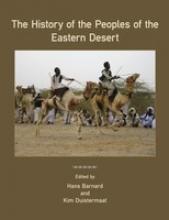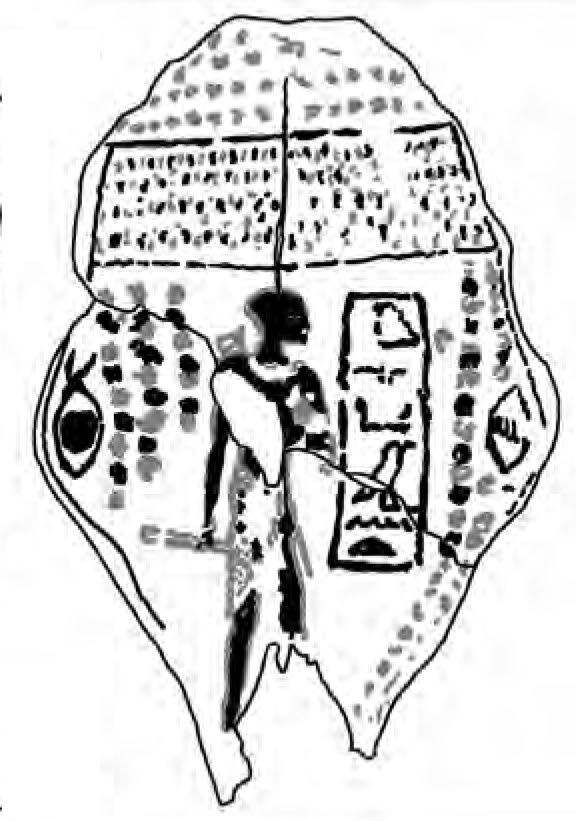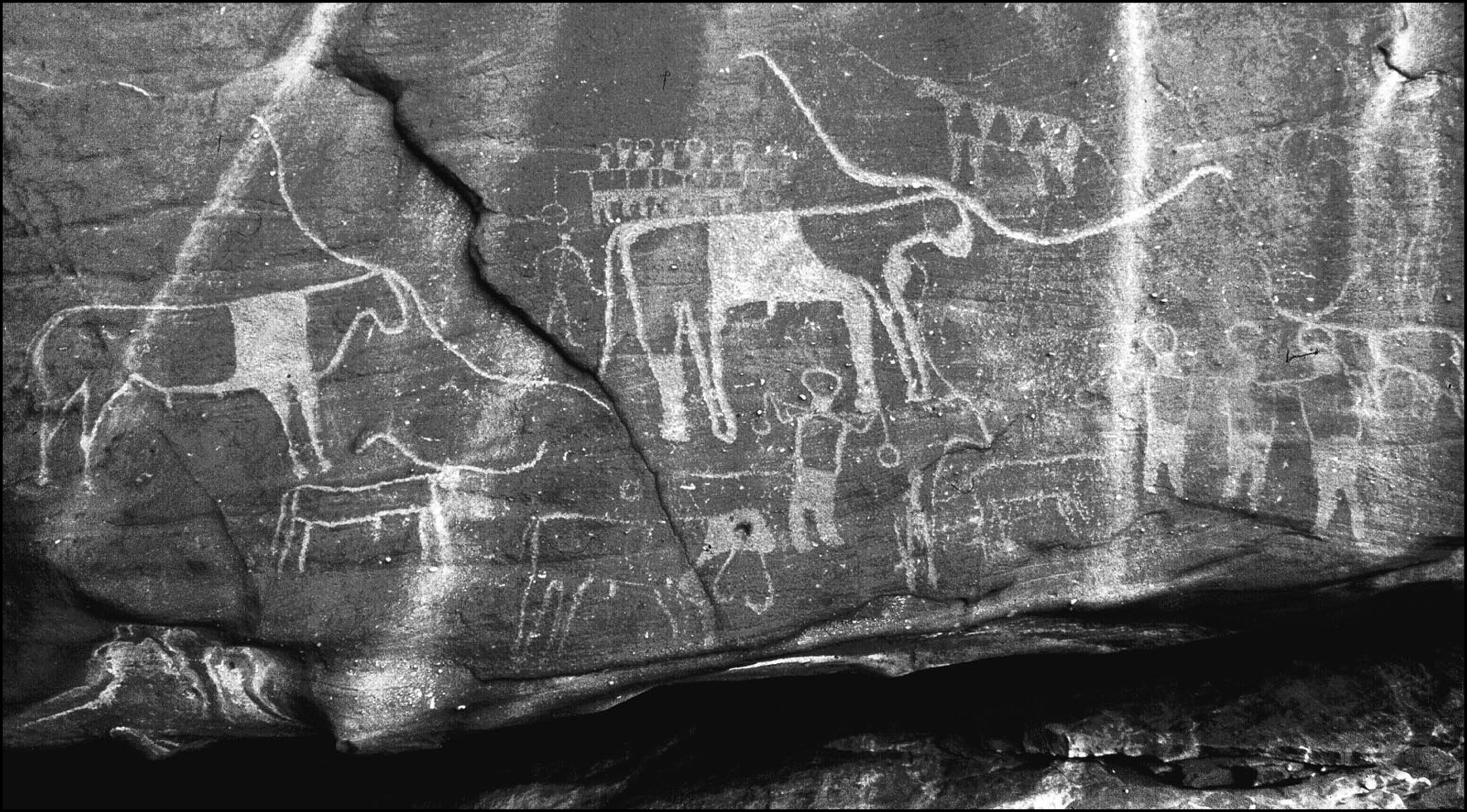
Backlist
Series: Monographs 73
ISBN: 978-1-931745-96-3
Publication Date: October 1, 2012
Price: Hb $77.00, eBook $62.00
Order this book here!
- Print: Order from our distributor

The last quarter century has seen extensive research on the ports of the Red Sea coast of Egypt, the road systems connecting them to the Nile, and the mines and quarries in the region. Missing has been a systematic study of the peoples of the Eastern Desert—the area between the Red Sea and the Nile Valley—in whose territories these ports, roads, mines, and quarries were located. The historical overview of the Eastern Desert in the shape of a roughly chronological narrative presented in this book fills that gap.

The multidisciplinary perspective focuses on the long-term history of the region. The extensive range of topics addressed includes specific historical periods, natural resources, nomadic survival strategies, ancient textual data, and the interaction between Christian hermits and their neighbors. The breadth of perspective does not sacrifice depth, for all authors deal in some detail with the specifics of their subject matter. As a whole, this collection provides an outline of the history and sociology of the Eastern Desert unparalleled in any language for its comprehensiveness. As such, it will be the essential starting point for future research on the Eastern Desert.

Table of Contents
Part 1
- Ch. 01: Introduction to Part 1: From Adam to Alexander (500,000–2500 Years Ago) by H. Barnard
- Ch. 02: Contributions to the Prehistory of the Eastern Desert in Egypt by P. M. Vermeersch
- Ch. 03: The Holocene Prehistory of the Nubian Eastern Desert by M. C. Gatto
- Ch. 04: The Journey to the Rock Art Gallery of Bir Nurayet (Sudan) by K. Pluskota
- Ch. 05: Boat Petroglyphs in Egypt’s Central Eastern Desert by F. Lankester
- Ch. 06: Nomads at the Nile:Towards an Archaeology of Interaction by C. Näser
- Ch. 07: Gods in the Red Land: Development of Cults and Religious Activities in the Eastern Desert by A. D. Espinel
- Ch. 08: Sinai in Egyptian, Levantine and Hebrew (Biblical) Perspectives by J. K.Hoffmeier
- Ch. 09: Vegetation and Management Regime Continuity in the Cultural Landscape of the Eastern Desert by G. L. Andersen
- Ch. 10: The Eastern Desert Tombs and Cultural Continuity by K. Krzywinski
- Ch. 11: The Desert Dwellers of Marmarica, Western Desert: Second Millennium BCE to First Millennium CE by A.-K. Rieger, T. Vetter and H. Möller
Part 2
- Ch. 12: Introduction to Part 2: The Last 2500 Years by H. Barnard
- Ch. 13: The Eastern Desert during the Ptolemaic Period: An Emerging Picture by J. Gates-Foster
- Ch. 14: Nabataeans in the Eastern Desert during the Roman Period by R. Z. Mohamed
- Ch. 15: Roman Gold Mining in the Eastern Desert: The Mining Settlement in Wadi Bakariya by B. J. M.Tratsaert
- Ch. 16: A Blemmy by Any Other Name…: A Study in Greek Ethnography by R. H. Pierce
- Ch. 17: Blemmyes, Noubades and the Eastern Desert in Late Antiquity: Reassessing the Written Sources by J. H. F. Dijkstra
- Ch. 18: On the Archaeology of the Native Population of the Eastern Desert in the First–Seventh Centuries CE by G. Lassányi
- Ch. 19: Results of Recent Mass Spectrometric Research of Eastern Desert Ware (4th–6th centuries CE) by H. Barnard
- Ch. 20: “You Shall Not See the Tribes of the Blemmyes or of the Saracens”: On the Other ‘Barbarians’ of the Late Roman Eastern Desert of Egypt by T. Power
- Ch. 21: Invisible Monks, Human Eyes and the Egyptian Desert in Late Antique Hagiography byK.M.Klein
- Ch. 22: Desert Imagery: Bedouin, Monks, Demons and Hermits around Saint Anthony’s Monastery by J. C. M. Starkey
- Ch. 23: Nomadism and the Monastic Life in the Eastern Desert of Egypt by M. Jones
- Ch. 24: Towards Variability: Cultural Diversity in Economic Strategies of the Beja Peoples by P. Weschenfelder
- Ch. 25: The Documentation of the Cultural Heritage of the Bedouin of South Sinai: A Pilot Study in Serabit al-Khadim by Hanna F. Keshk and S. Aboubakr
- Ch. 26: Nominating Suakin a World Heritage Site by M. D. S. Mallinson
- Ch. 27: The Establishment of a Transboundary Biosphere Reserve in Wadi Allaqi, Egypt by al-Aawah and C. De Simone
- Ch. 28: Beja Innovation and Responses to Environmental Change in the Southeastern Desert of Egypt by A. Roe
- Ch. 29: Giving a Voice to the Ababda by Abdel-Qadr, W. Z. Wendrich, Z. Kosc and H. Barnard
- Ch. 30: Sustainable Desert Tourism: A Tool for Competition by S. B. Hassan
- Ch. 31: Concluding Remarks by J. L. Bintliff and H. Barnard
